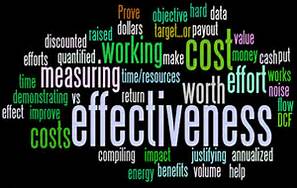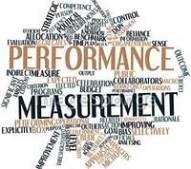
Building an Effective Diversity ROI Measurement System
Copyright 2017 by Dr. Edward E. Hubbard. All Rights Reserved. President & CEO, Hubbard & Hubbard, Inc.
Although interest in measuring the effects of diversity has been growing, the topic still challenges even the most sophisticated and progressive diversity departments. Diversity Professionals and Practitioners know they must begin to show how diversity is linked to the bottom-line or they will have difficulty maintaining funding, gaining support, and assessing progress. But where do they start? Well, I will weigh in on this topic with a few thoughts in a “two-part” analysis of this dilemma. In this segment (Part One), I will give an overview of a 5 step process to consider and highlight some key background issues. Part Two will detail each step of the 5-step process including possible diversity metrics, formulas, and suggestions. Although measuring Diversity Return on Investment (DROI®) impact is not an exact science, there are a number of valid techniques, tools and reliable methods for translating business performance gains into tangible financial results that C-Suite executives will support and embrace. Let’s get started by addressing the fundamental question…
Can diversity be measured?
Before we look at what to measure, I’d like to address the concern some practitioners have about the validity of measuring diversity results. Some practitioners seem to believe that quantifiable and quality-based measures cannot be applied to the diversity implementation process or a diverse work culture. Others believe that diversity is not a business-focused activity, simply another form of affirmative action regulatory compliance. However workforce and market place demographics make diversity a business and customer issue, as well as a global competitive issue!
Regardless of the events that led to this conclusion or whether this subjective position is valid or not, the fact that the position exists and that some diversity professionals and other business people support it creates major problems. In particular, it sets managing and leveraging diversity apart from the rest of the organization. While peers in other organizational areas are focusing on metrics that reflect their contribution such as sales, reduced costs, profits, income and expenses, those implementing the diversity process often limit their discussion of diversity’s contribution to increased awareness, improved feelings, and increased satisfaction among work groups. Only a select few really show demonstrated, evidenced-based results of Diversity’s impact on organizational performance.
As a result, diversity is not taken seriously. Fewer managers support it in actual practice, such as, sending their workforce to be trained, using Diversity in potential alternatives to solve business unit and customer problems, etc. Even fewer managers structure their workforce to leverage its richness through teaming, implementing strategic partnerships to penetrate key ethnic customer markets, and so on. We know from current organizational practice that diversity initiatives often experience less management support than other business initiatives.
Hubbard & Hubbard, Inc.’s Seven-Level Diversity ROI Analysis Framework teaches Diversity & Inclusion Professionals how to analyze and build credible Diversity ROI performance solutions grounded in scientific processes and analytics which show a measurable, evidence-based difference on the organization’s bottom-line. These value-added outcomes are reported showing ratios such as “Benefit-to-Cost”, “Payback Period”, “Diversity Return on Investment”, “Return on Expectations”, and more. Our copyrighted Diversity and Inclusion ROI Sciences® also include at least 10 different methods and “isolation processes” which highlight Diversity and Inclusion’s contribution verses all other contributors to the outcome.
Why is having an isolation technique important? This is necessary because you will often get asked: “How can you prove that it was Diversity and Inclusion that generated the value-added outcome”? A question this question prompts for me, for example, is “How can you prove that it was Sales that generated the revenue increase”? On the Sales side the reality could have simply been a case where three competitors dropped out of the organization’s market and the business gained new customers. The displaced customers were all looking for a new source to supply their needs and the Sales department increased Sales with no real “Sales” effort.
Using Diversity and Inclusion ROI Sciences® allows the C-Suite, the Board, and other stakeholder to appreciate Diversity & Inclusion’s value beyond Representation. The business case for Diversity and Inclusion can be difficult to make when the Diversity & Inclusion organization can’t credibly show there is something on the other side of the “equal” sign demonstrating that it produces real tangible value that is measurable based upon the investment made in D&I.
How Would this Situation Play Out in your Organization??
Suppose the C-Suite announced that Sales are down in key growth markets, operational processes to meet customer expectations have broken down, and three major competitors have gained 40% of the organization’s market share. Question: Would you be prepared to show how utilizing Diversity and Inclusion can help solve these problems or would you say that’s a Sales, Marketing, and/or Operations problem. Would Sales, Marketing, and/or Operations even want your involvement? Would they view your potential Diversity and Inclusion perspective or contribution as “relevant” to solving these problems?
The Diversity ROI and HH Diversity and Inclusion ROI Sciences® methodology can assist Diversity & Inclusion Practitioners with the means to demonstrate their value and address these “real” business issues. The solutions can be addressed with Diversity and Inclusion processes that go well beyond “Representation”. They must show how to drive tangible financial business performance using Diversity and Inclusion strategic methods. It’s probably a good bet that when Sales, Marketing, and Operations begin to approach the problem, they will have analytics, metrics, and other sciences of their disciplines to offer solutions that can be measured using solid Sales, Marketing, and Operations sciences. Over the last 30 years, Hubbard & Hubbard, Inc. has developed and applied a set of Diversity and Inclusion ROI Sciences® globally in a wide variety of industries with success. We know and have definitive ROI-based evidence that Diversity and Inclusion Practitioners can deliver on this value proposition with the right skill and competency set.
I’m not suggesting that measurement and sciences are the sole solution to Diversity’s acceptance into the corporate landscape. But measurement of results is a useful tool that allows the Diversity Practitioner to talk the language of other managers and top management. Remember Diversity and Inclusion efforts are not conducted in a vacuum. They are part of an organizational system of processes, activities, and events aimed at delivering “value”, “impact” or both.
Building a measurement system
The creation of an effective Diversity measurement system and “best” practices cannot be a mechanical modeling exercise. It must be preceded by an inspection and utilization of basic business principles. It must focus on organizational and departmental strategic thinking as well as an assessment of business needs, goals, objectives and the desired quality of work-life. Developing the actual measures is easy compared to the amount of time that should be spent thinking about what is important to the organization’s strategic business objectives and the expectations of the Diversity measurement process.
Key steps to building an effective measurement system
Creating an effective Diversity measurement system and process that embodies these concepts involves at least five critical steps:
- Review the Strategic Business Plan for Needs
- Formulate Research Questions
- Design the Study Methodology, Metrics, and Analytics
- Collect and Analyze Data
- Implement Solutions and Communicate Results
Each step in the process logically builds on the previous step which generates an evidenced-based framework that creates a “Best Practice” method for proving Diversity’s link to performance. In the next segment (Part Two), we will explore each step in detail and provide suggestions for their effective use.
Dr. Edward E. Hubbard Short Bio
Dr. Edward E. Hubbard is President and CEO of Hubbard & Hubbard, Inc., (http://hubbardnhubbardinc.com), Petaluma, CA, an international organization and human performance-consulting corporation that specializes in techniques for applied business performance improvement, workforce diversity measurement, instructional design and organizational development.
The Ohio State University awarded Dr. Ed Hubbard the Alumni Distinguished Achievement Award for 2017. In April, 2012 Dr. Hubbard was an honoree at the Inaugural International Society of Diversity and Inclusion Professionals Legends of Diversity Ceremony in Rio Grande, Puerto Rico where he received the Legends of Diversity Award for establishing the “Diversity ROI Analytics” and “Diversity Measurement Fields/Disciplines”. The American Society for Training and Development (ASTD) inducted Dr. Ed Hubbard into the prestigious “ASTD New Guard for 2003”. The July/August 2007 Issue of Profiles in Diversity Journal featured Dr. Hubbard as the “Diversity Pioneer” in Diversity Measurement.
Dr. Hubbard serves on the Harvard Business Review, Diversity Executive Magazine and Strategic Diversity & Inclusion Management (SDIM) magazine Editorial Advisory Boards.
Dr. Hubbard is an expert in Organizational Behavior, Organizational Analysis, Applied Performance Improvement and Measurement Strategies, Strategic Planning, Diversity Measurement, and Organizational Change Methodologies. Dr. Hubbard earned Bachelors and Masters Degrees from Ohio State University and earned a Ph.D. with Honors in Business Administration.

